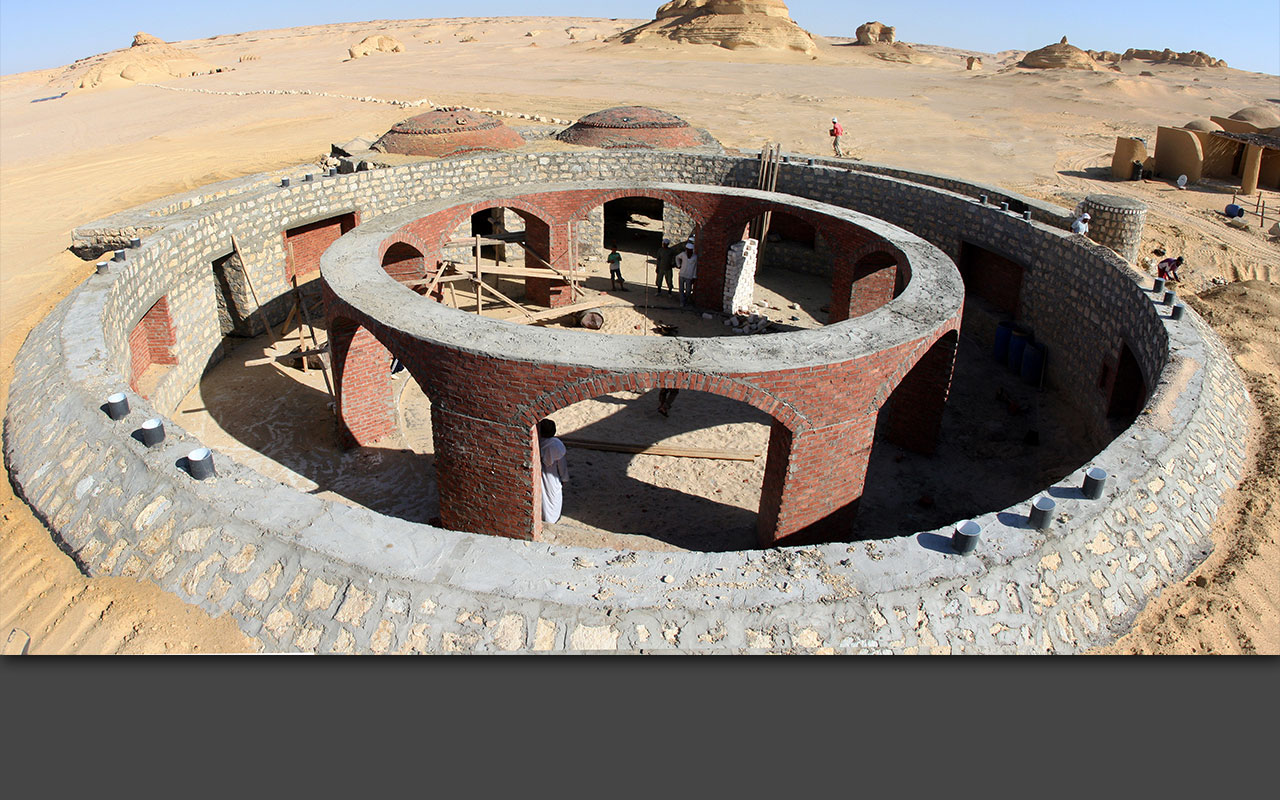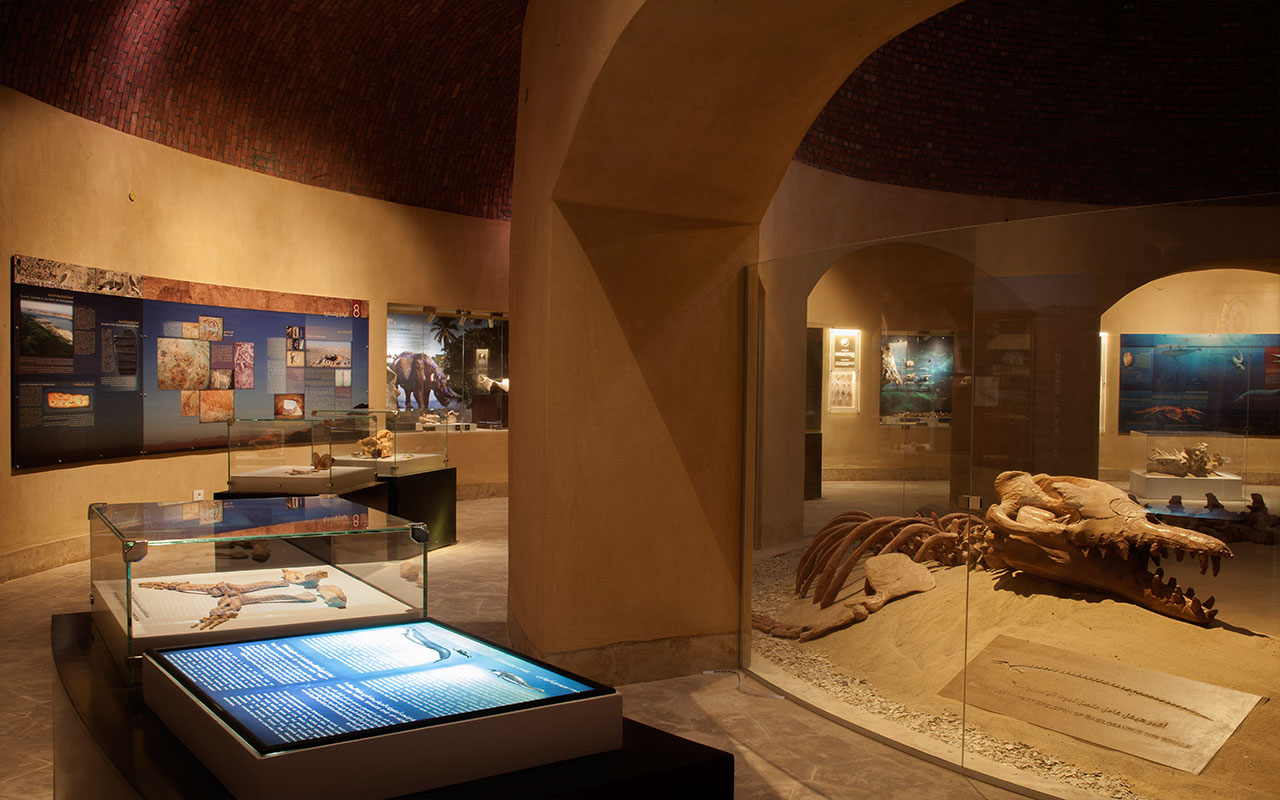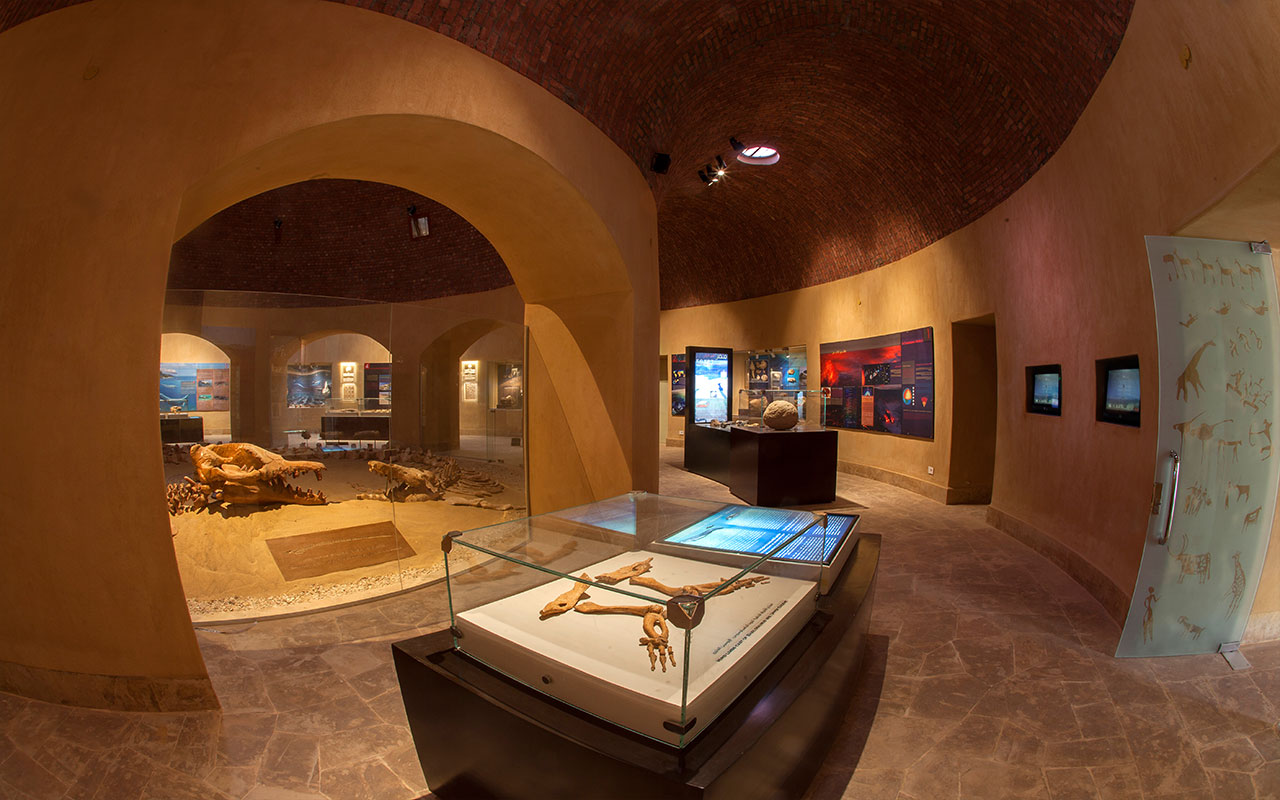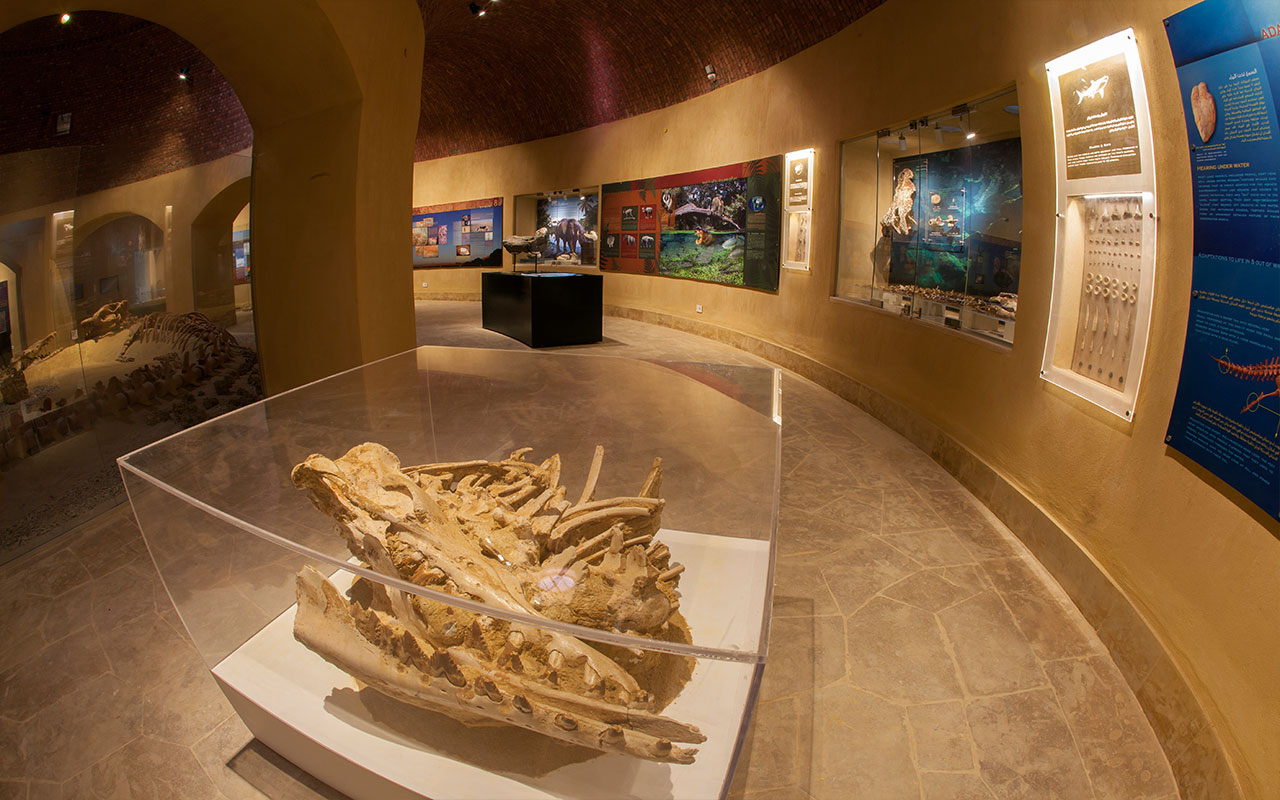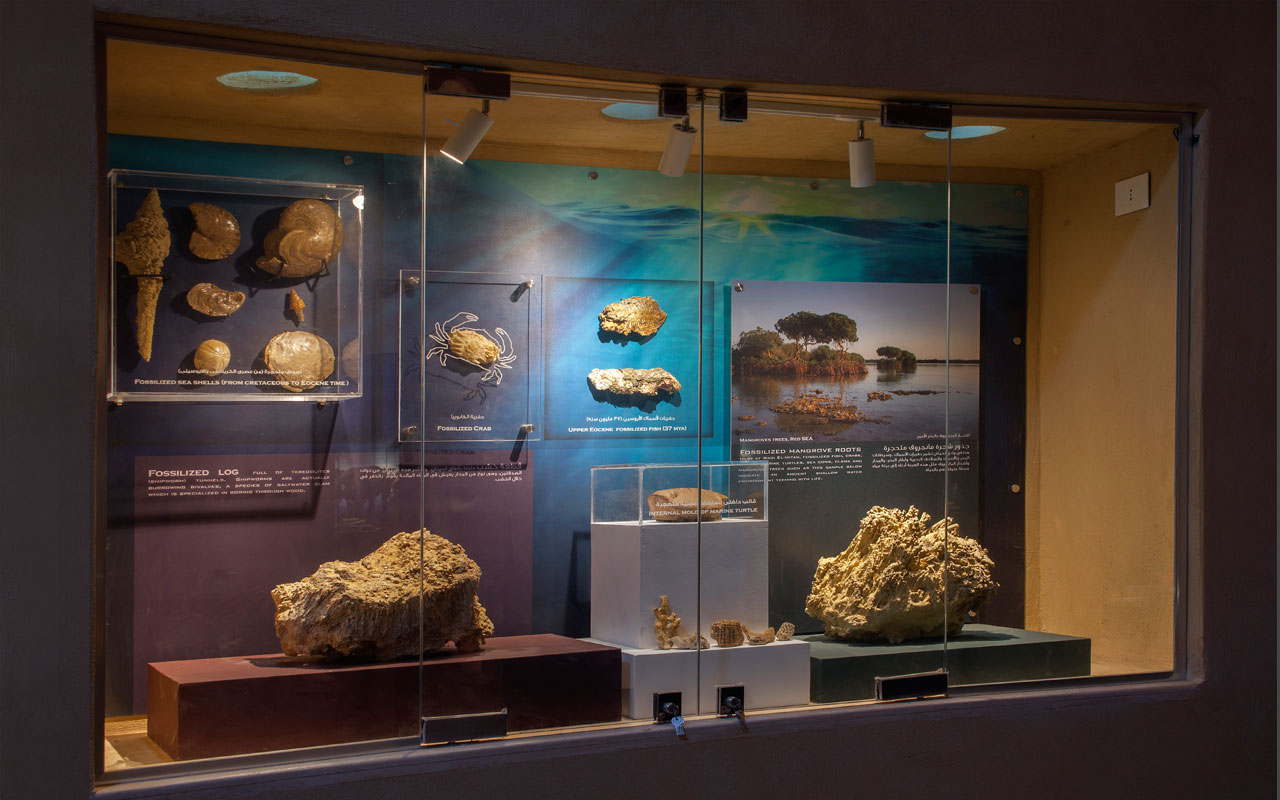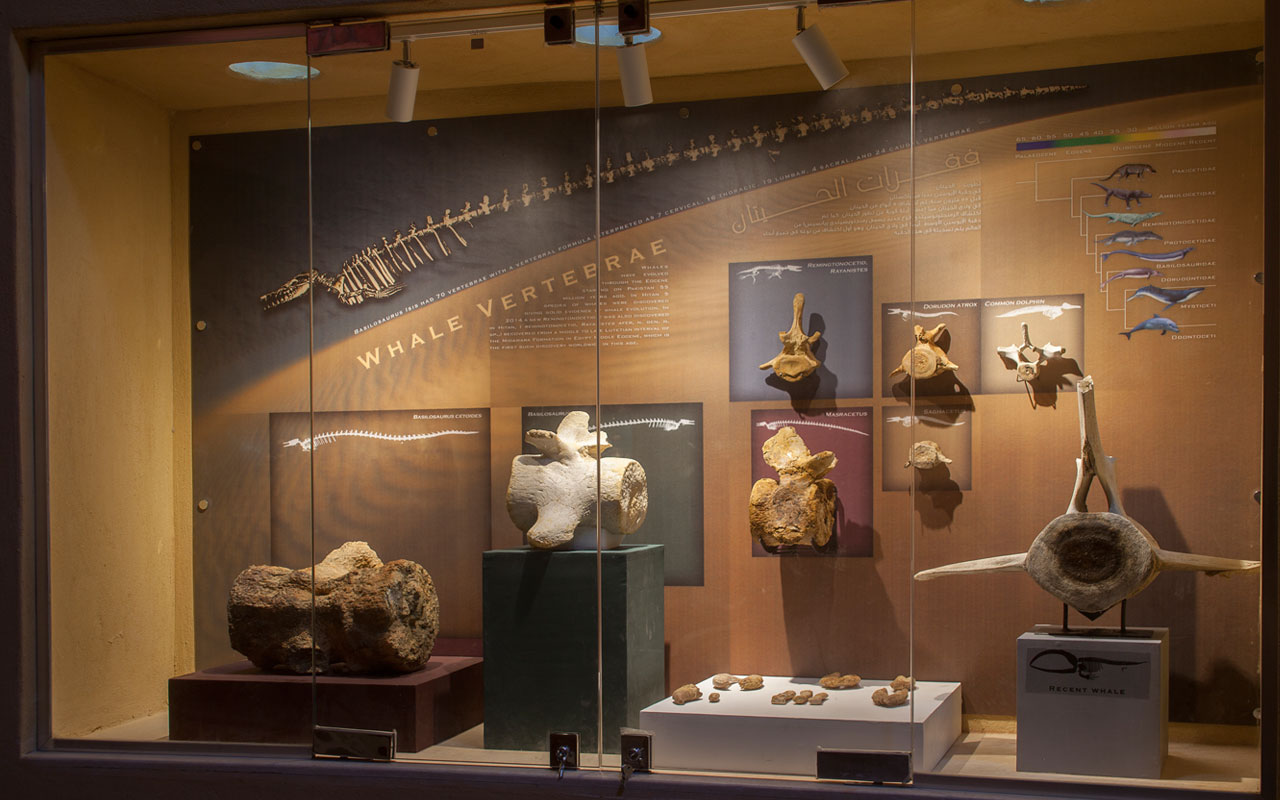Wadi El Hitan Fossil & Climate Change Museum
The museum’s design followed the same architecture character established in the first phase which included the open air museum and visitor facilities (previous link).
The building is half buried into the ground in order to have less visual impact on the landscape. This concept exposes only the curves of the dome and vaults above ground making it less visually obstructive, mimicking the landscape and in line with the existing architecture. This also gives visitors a sense of suspense as they go underground where ancient whale remains are buried… much like the original fossils were concealed underground.
This design also helps keep a more comfortable temperature indoors while making the building more rigid in withstanding the outward thrusts exerted by the vaults and dome. The use of natural systems for energy and lighting and ventilation requirements is maximized. Natural ventilation and lighting are provided through high openings and roof slots while niche exhibits are provided with lighting shafts.
The museum’s circular building boasts the largest Basilosaurus fossilized skeleton on display in the center of the museum gallery, under the large dome. Visitor circulating around this central display experience the world of climate change, taking them on a journey through the history of our planet’s changing climate from the origins of Earth, through the shifting eons to the environment of Hitan and its inhabitants 40,000,000 years ago, and ending with today’s unique climate change issues and the future we now face.
* The construction of these facilities was made possible with the support of EEAA, the Government of Italy and UNDP.
